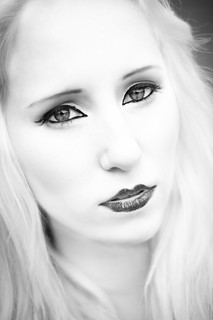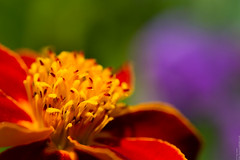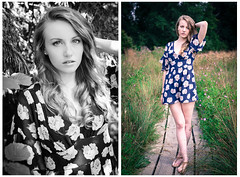Today our trip took use to London to visit a printing house known as, The Print Space. Since we are all exhibiting at the Lanchester Gallery in Coventry at the start of June, it was a good idea to get know the different print papers and mounting options available to us and to see what would best suit our work. Also it was a chance to see how a printing place works in terms of handling prints, how it operates and what formats they need to be able to print the images.
After listening to the talk on the paper types I have decided that Kodak Metallic would be a good choice for my type of work. It is vibrant, holds colours well, gives a 3D effect and holds the colour silver really well which would make my x-ray pictures that I have in mind really stand out and become almost like real x-ray images. The only downside to this image is that is highly reflective. In terms of mounting I am still deciding between diabond because it is light and works great on large scale images or Aluminum which would look good and go well with the silver content and over all print quality of the metallic paper, but is heavier and could sag on big scale images.
- Open loop system.
- Create their own print profiles
- The control stays with the owner rather than the printer
- Saves costs
- Quick turn around
- Work on a calibrated screen
- Free screen calibrating service
- Can seal prints that are not mounted.
- All papers can be mounted on all formats.
- MDF not suitable for fuji flex – imperfections show up.
- 5-10 days mounting.
C- type print
- Chromogenic print
- Exposure to light
- Fuji matt
- Slight shine, not dead matt
- Portraits
- Fashion
- Landscape
- Product
- Popular paper
- Fuji gloss
- More brightness and punch to the image
- Same as the matt
- Slight mirror effect in darker areas.
- Fuji flex
- High gloss
- More vibrant colours than the first two
- More expensive than the first two
- Kodak metallic
- Suits really colourful images
- Makes them stand out
- Slightly high reflective
- High silver content
- More modern black and white feel, mid-tone grey tend to go silver
- True silver finish on silver subjects in the frame.
- Difference between c-type and inkjet
- C-type more robust prints
- Archival 40 light 80 dark, ink jet, 40 light 200 dark
- Inkjet – 256 different colours
- C-type 16.7 million colours due to the light sensitive nature so are variable to different exposures and allows a smaller gap between different colours.
- C-type has better gradients, and black are better.
- Inkjet – wider colour gamma, so means more vibrant, brighter colours and a wider range.
Inkjet
- Good for textured
- Epson semi-gloss
- Similar to fuji matt
- Popular paper
- Slightly flatter than c-type
- Canson Baryta gloss
- Similar to fibre based paper
- In between c-type and inkjet
- Harman warm tone gloss
- Similar to surface and weight to the canson just a warmer tone to soften highlights
- Similar to dark room warm tone papers
- Hahnemuhle Pearl
- Slight shine and texture
- More robust paper
- Fibre based paper
- Popular for black and whites
- Hahnemuhle Photorag
- Dead flat matt paper
- Really popular for black and white
- More delicate paper
- Nice bright punchy colours on it
- Hahnemuhle german etching
- Similar to the photorag paper but with more texture, more canvas look and feel to it
- Water colour paper tweaked for inkjet use
- Canson Aquarelle Rag
- Matt paper
- More embossed texture
- More popular with graphic students and artists
- Another old water colour paper
Mounting
- 2mm cardboard
- cheapest
- light
- not the strongest and could bow.
- Easily affected by temperature and moisture
- Commonly used in framing
- Foam board
- 5 or 10 mm
- light
- soft material – easy to damage and dent
- short term backing usually
- rigid
- large attachments can be hung by Velcro
- foamex
- rigid PVC
- 3 or 5 mm
- white or black
- stronger than the previous
- light weight
- large pieces can be hung
- 10ft by 5ft max in 5mm
- relatively cheap to use
- midrange work
- can be used in frame work at 2mm
- MDF
- Or block mounting
- 12mm
- deep
- strong
- painting white or black
- heavy material
- aluminium
- metallic print and aluminium
- subframe or wooden battens to make it stand out from the wall.
- Heavy material
- Can be effected by temperature and can warp
- Diabond
- Stronger than aluminium
- Lighter than aluminium
- Stays flatter
- Good for larger prints
- Wont sag.
- Can be sealed to protect the print.
- Acrylic reverse
- Acrylic mounted to the surface of the print
- Back with Perspex, aluminium or diabond
- £98 for 16×12 (A3ish)
- labour intensive.
Paper Types Video
Mounting Video







